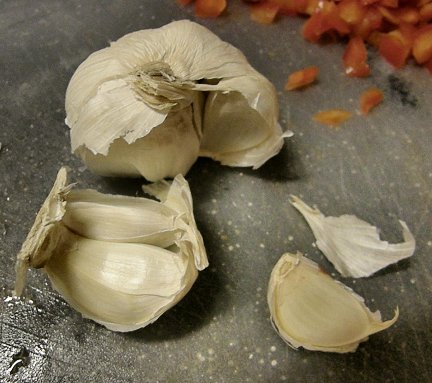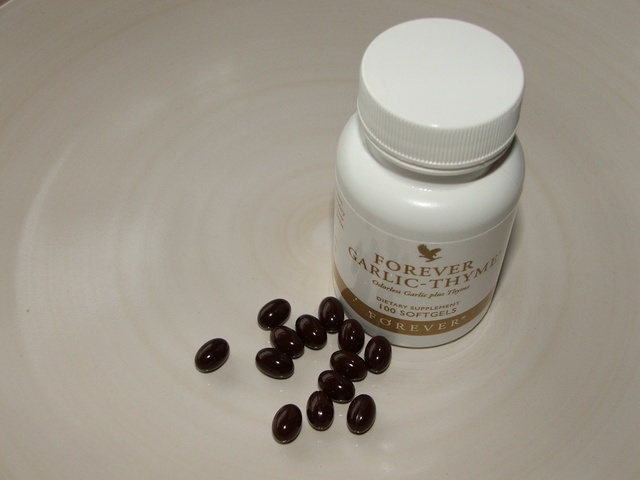|
Vitamins and minerals, the healthy benefits of garlic Allow to sit for about 15 minutes to produce a super nutrient 'allicin'. If you can possibly bear it, eat it raw as chewing has the same effect. Having tried it raw I will stick to the garlic and thyme capsules I take, preferring them to tablets. I always try to include garlic in cooked dishes and 'No, I don't reek of garlic!' To help neutralize the smell, try eating fennel seeds or chewing on fresh parsley. The smell is actually hydrogen sulphide, an antioxidant, which our bodies have a natural supply. Modern research has shown that eating garlic appears to boost our natural level. Some studies have concluded by stating that the boost in hydrogen sulphide may well explain why garlic-rich diets appear to protect against various cancers. These include breast cancer, prostate cancer and colon cancer. The benefits of garlic and cholesterol have been linked for a long time. Heating garlic produces another compound which helps lower both cholesterol and blood pressure levels, by preventing clotting in the arteries. A species of the family Alliaceae, along with onions, chives, leeks and shallots, it's true name is 'Allium sativa'. What about growing your own? As with all home-grown vegetables the taste is always better. Because garlic has fungicidal and pesticide properties it can also help keep neighboring plants healthy. Nutrients of Garlic. Vitamins B1, B3, B5, B6 and C Garlic is a good source of vitamins, minerals and protein. The healing powers of garlic stem from the many sulfur compounds found in the vegetable, including allicin. It has also been proved to be effective against colds and flu, Candida and stomach viruses. As I mentioned, I don't eat raw garlic, but it doesn't put me off using it in a variety of recipes, cooked or otherwise. Why don't you give some, or all, of the following a try and get the health benefits of garlic for yourself.
Consumed this way on a regular basis will most certainly provide your body with the extra benefits of garlic. A few snippets on the history of garlic.
Home Page - from - Benefits of Garlic
|






 To get the full health benefits of garlic, crush or fine-chop the garlic at room temperature.
To get the full health benefits of garlic, crush or fine-chop the garlic at room temperature.
